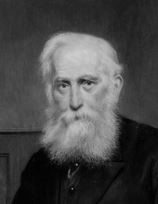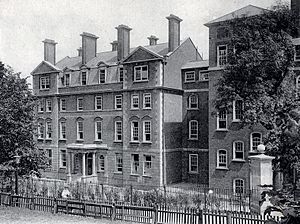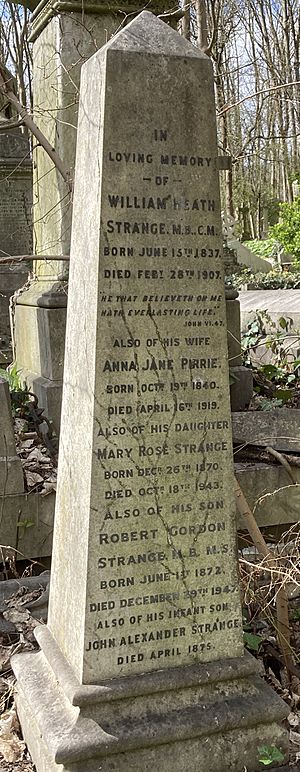William Heath Strange facts for kids
William Heath Strange (born June 15, 1837 – died February 28, 1907) was a kind doctor who started the Hampstead General Hospital. This hospital helped many people and was built where the Royal Free Hospital stands today.
Early Life and Education
William was born in Devizes, Wiltshire, England. He was the youngest son of Mary and Robert Strange, who was a solicitor (a type of lawyer).
He began his medical training at St Thomas's Hospital in London. To become a doctor, he needed to pass important exams.
In 1862, he took an exam alongside 51 other men and one woman, Elizabeth Garrett Anderson. She later became the first woman doctor and surgeon in Britain! She also started her own hospital in London.
William finished his medical studies at the University of Aberdeen in Scotland. In 1866, he earned his degrees as a doctor and a surgeon. One of his teachers there was Professor William Pirrie, whose daughter William later married.
Starting a Hospital
After becoming a doctor, William moved to Belsize Park in Hampstead, London. He started his own medical practice, where he worked for over 40 years.
He helped create a medical center in Long Acre, Covent Garden. This center grew into the London Medical Mission in 1871, which helped people who couldn't afford medical care.
William also worked at the Hampstead Provident Dispensary. Here, he saw that many of his patients, especially those with less money, needed a proper hospital.
In 1882, he bought a house at 4 South Hill Park Road. By the end of that year, 15 patients were already being treated at his new place, called the Hampstead Home and Nursing Institute.
William, who was known as "Heath," also trained women to become district nurses. These nurses visited sick people in their homes to care for them.
Later, the hospital moved to a bigger building at 3 & 4 Parliament Hill Road. This new location allowed doctors to perform surgeries in much better conditions, instead of in people's homes. It also meant nurses could learn more about anatomy (how the body is built) and physiology (how the body works). This was important because, at the time, many parents didn't want their daughters to work.
Growing the Hospital
By 1894, William's hospital was very successful. Poor people could get free care in the general wards. Those who could afford it paid a small fee of 12 shillings a week.
The hospital became so popular that it needed an even bigger, specially built place with better facilities for out-patients (people who visit for treatment but don't stay overnight).
A new site was bought on Hampstead Green, Pond Street. In 1905, the new Hampstead General Hospital opened. It was designed by Keith Young and started with 50 beds.
William was in his late 60s by then. He felt it was the right time to step down from his role. The hospital continued to grow until 1975, when it was taken down to make way for the new Royal Free Hospital.
Family and Legacy
William married Anna Jane Pirrie (1840–1919) in Aberdeen on May 24, 1866. She was the third daughter of his old professor, William Pirrie.
They had four children:
- William Pirrie (1869–1953)
- Mary Rose (1870–1943)
- Robert Gordon (1872–1947)
- John Alexander (1875–1875)
William Heath Strange passed away suddenly on February 28, 1907, at his home at 2 Belsize Avenue. He is buried with his wife Anna and all four of their children in a family grave. Their grave is on the eastern side of Highgate Cemetery, near the graves of famous people like George Eliot and Karl Marx.
William Heath Strange is remembered for his dedication to helping people and for founding a hospital that grew to serve many in need.




